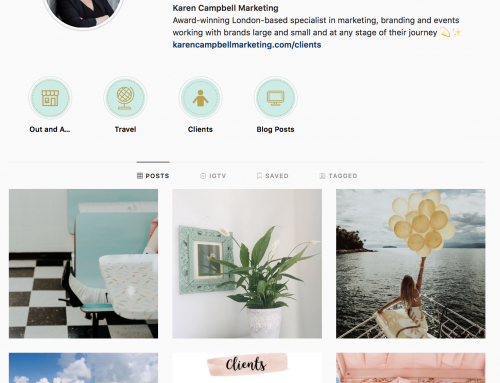Even after working in senior marketing roles for more than ten years, I still get confused with all the marketing lingo and jargon that gets thrown about. So I completely empathise when my clients get confused. I mean what’s the difference between inbound marketing and digital marketing? Is there a difference (yes!)? And why as a business owner do I need to know and understand this?
It can all be very confusing, seem quite complicated and ultimately be overwhelming to someone who is trying to market their business – but it doesn’t have to be. Here’s my top line guide to digital marketing and its componants and why it’s imperative to your business success.
Digital Marketing
So first things first, what is digital marketing? This is basically all marketing that happens electronically. So when you use your website, social media, emails, online assets or affiliate sites to shout about your brand.
Digital marketing examples include: content marketing, social media marketing, inbound marketing and SEO. Let’s break those down:
Content Marketing
This describes the creation of content for the purpose of generating brand awareness, getting more traffic to your site and ultimately more clients / customers.
Content marketing can include your blog copy. I encourage all my clients to write a blog as this gives their website regular new content (great for SEO), allows them to showcase their expertise in their fields and offer added breath of value to their readers.
Another option is creating infographics for your brand showcasing visually facts, statistics or both. This can be a great opportunity to offer a snapshot insight into your business and can often have a stronger impact than copy.
Social Media Marketing
This is where you promote your brand and content through social media channels aiming to increase awareness, drive traffic to your site and ultimately generate interest and leads in your offer. As I have written about before, a consistent and succinct social media profile that is brand adjacent with your tone, look / feel and language can be hugely successful and many brands experience their greatest successes through social media alone. Have a look at accounts out there you admire and adapt what you love about them to your own.
An increased offer here is PPC (pay per click) where you can pay for more exposure on sites such as Facebook, Twitter and Linked In and measure the uptake.
Affiliate Marketing
Affiliate marketing is when you receive commission for advertising some other brands’ products or services on your site. This is a tricky area for me as if your brand bedfellows aren’t adjacent to yours, it can damage your credibility and authenticity so my advice is to always tread carefully here.
Marketing Automation
This refers to software that automates your marking outlay. For example, this can include using Mailchimp to design and schedule your newsletters or Hootsuite for scheduling your social media content. I am a big fan of both of these and organising and scheduling content really does save time and allows more focus for future growth and acquisition work.
So, What Is Inbound Marketing?
Compared to Digital Marketing, Inbound Marketing focusses on working with the client at every stage of their brand engagement journey. So, you can use all the digital marketing outlets described above to create a client experience that works with the customer not against them. Such as a blog vs an ad or a dedicated email compared to generic email spam.
In all honesty, inbound marketing strategies are used by the larger companies as a specific recruitment and engagement strategy but it is worth being aware of.
Digital marketing is the largest offer for most business owners and used well, can be hugely beneficial and can drive awareness, insight and clients so do get familiar with it (or hire someone that is!). Most of your audience are online so that is where you need to be.





